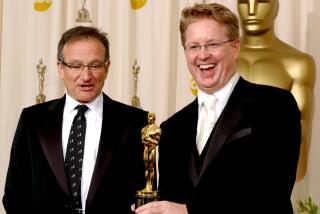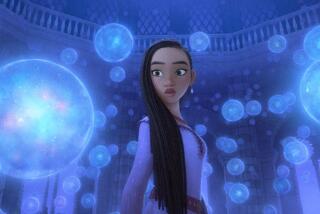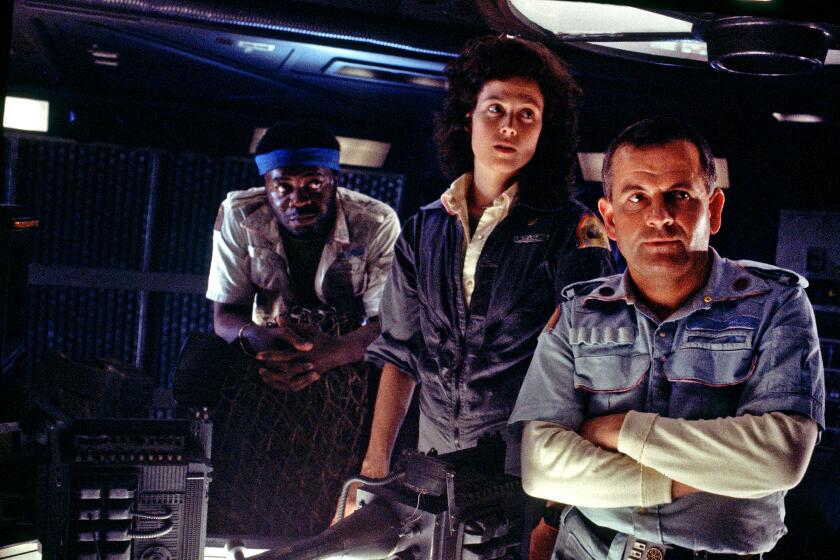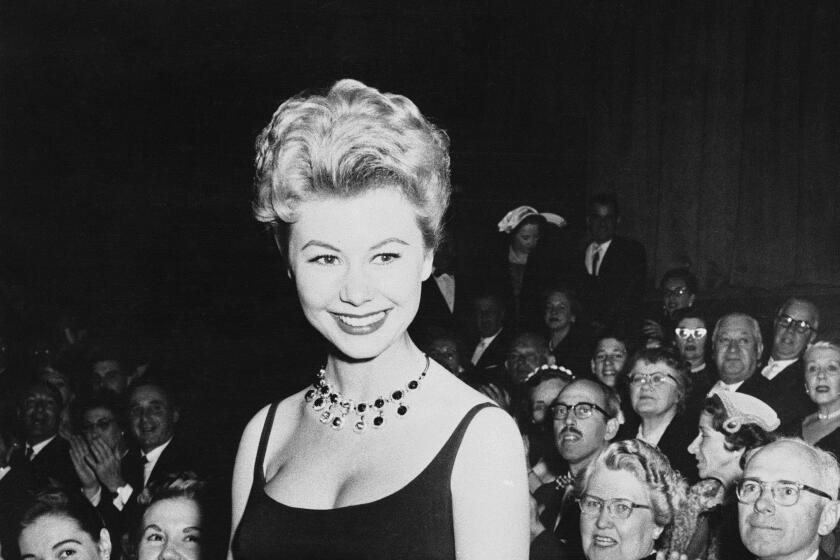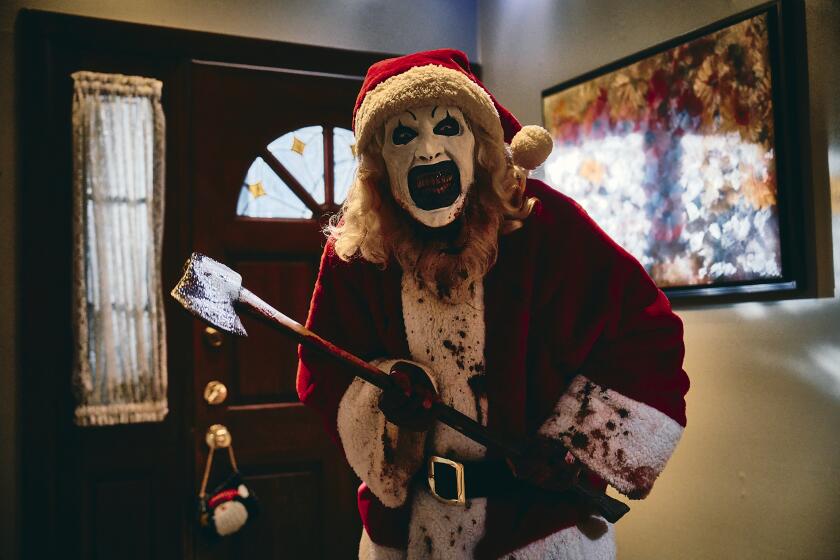The original ‘Dumbo’ arguably was Disney’s most important blockbuster
In the early 1940s, this newspaper wrote repeatedly in gushing terms about an animated picture from Walt Disney, one in which it was declared that any faults “do not come to mind while seeing the film.”
It was not 1940’s “Pinocchio,” regarded today as a groundbreaking work in effects animation and arguably still one of Disney’s more intrinsically detailed, emotionally expansive films.
Nor was it that year’s “Fantasia,” a musical experiment that made the case that animation should not be regarded as just a vital American art form but taken as seriously as any medium. (“Fantasia,” of course, is also the movie that has given us the signature image of Mickey Mouse in “The Sorcerer’s Apprentice,” itself a showstopping work of animation that’s full of movement.)
Instead, it was 1941’s “Dumbo,” at 64 minutes (including credits) one of Disney’s most economical animated works. Visually, “Dumbo” looks built for the small screen rather than the large one, with broad-stroked, bold drawings, the sort more akin to Disney’s shorts than its elegant, painstakingly made films such as “Bambi” or “Snow White and the Seven Dwarfs.”
Rushed into production largely because the studio needed an influx of cash, “Dumbo” is credited as a key player in saving Disney’s fortunes. But if all had gone according to the studio’s initial plan, 1942’s “Bambi” would likely have preceded “Dumbo” to the big screen. However, that film’s animals, equally realistic and fantastical, as well as its harrowing forest fire scene, were, to say the least, a challenge to both conceptualize and animate.
Critics at the time weren’t always impressed with Walt Disney’s bid to turn animation into a fine art.
Review: Tim Burton’s ‘Dumbo’ is as clunky as an elephant learning to fly »
“It may well be news to Hollywood that Disney was ever anywhere but at the top of the movie pyramid,” wrote a reviewer of “Dumbo” in The Times in 1941. “But recently New York’s critical soothsayers have begun to have their doubts. ‘Pinocchio’ and ‘Fantasia’ were charming films to see, but there was about them an aura of artistic straining which was painful to those reviewers — who contend — with considerable reason — that the movies achieve art most successfully when they most accurately reflect the tastes and experiences of mass audiences, not when they try to uplift said audiences by copying traditional art.”
Those writing about film weren’t dismissive of “Pinocchio” and “Fantasia,” but the underlying current of many a review was that both movies lacked a certain soul or heart that was present in 1938’s “Snow White and the Seven Dwarfs.” Audiences too didn’t immediately warm to either, which placed a sudden financial burden on the burgeoning studio — one that just a few years earlier had hushed all naysayers with the exquisite, unexpected blockbuster that was “Snow White.”
There were, it must be noted, factors out of Disney’s control contributing to the studio’s struggles. World War II caused the studio to lose what was once estimated in this newspaper as nearly 40% of its market, and prior to “Dumbo’s” release, the company had sunk a heavy investment into its necessary-but-fancy new Burbank home. And “Pinocchio,” as Walt Disney would defensively point out, had the bad timing of being released during mania for “Gone With the Wind.”
If Disney were to survive — at least as Walt had envisioned it — it needed a hit, one that would be relatively cheap and quick to produce. Culturally, Disney’s current films were perceived by the critical elite as lacking the warmth and whimsy of its “Silly Symphony” and Mickey Mouse shorts. “Cold” is a word that appears in many descriptions of “Pinocchio” and “Fantasia,” films that are probably more adored today and are perceived as concluding Disney’s first major golden age.
Financially, budgets for “Pinocchio” and Fantasia” had swelled to well above $2 million, driven not just by Walt Disney’s desire for perfection but in his belief that animation is the ideal medium for telling mature stories. Both failed to bring in a profit in their initial runs, prompting the studio to look for quick turnarounds, the first of which was the slight — some may say tacky — Disney advertisement that was “The Reluctant Dragon.”
And then there was “Dumbo.”
Based on a then-unpublished children’s book by Helen Aberson and Harold Pearl, which Disney acquired the rights to in the late 1930s, “Dumbo” was initially conceived as a short. But its simple, relatively linear story with few human characters meant, for Disney, that it was the right story at the right time. Added bonus: Its exaggerated animals and one-note plot required no special effects.
Disney relaxed his pressure on his animators to advance the medium, allowing, essentially, as noted in Neal Gabler’s biography “Walt Disney: The Triumph of the American Imagination,” photostats of sketches rather than full layouts. And while varying figures are floated for the film’s six-figure budget, it was finished in a year and a half — compared to, say, the five or so for a Walt passion project such as “Bambi.”
Its initial run brought in half a million in profit, which, if not erasing Disney’s debts, eased investor concerns. While instantly hailed as a masterpiece, “Dumbo” exists in part because it was, well, cheap.
“First, I was going to make it as a 30-minute subject,” Disney said in 1956 in a quote unearthed in Taschen’s expansive “The Walt Disney Film Archives: The Animated Movies 1921-1968.” “But as I got developing and we got new things in there … I kept expanding and before I knew it, I had a 62-minute picture that cost $700,000. And when it reached that point I said, ‘That’s as far as I can stretch it.’ They said, ‘Can you add another 10 minutes to it, Walt?’ and I said, ‘No. That other 10 minutes is liable to cost another half million dollars.”
RELATED: Tim Burton’s ‘Dumbo’ isn’t your grandfather’s Disney classic »
It can — and has — been argued that its financial limitations led to some inventive animation, namely in the trippy pink-elephant sequence, which inspired a whole breadth of ’60s-era psychedelics. Often, humans are seen simply as shadows in a tent, which while deviating from the precision of earlier Disney movies, heightens “Dumbo’s” themes of isolation and careless bullying.
Of course, the so-called faultless film has many peculiarities for modern audiences. Dumbo, for one, discovers he’s special only by getting black-out drunk. And that says nothing of the picture’s well-documented racial insensitivities.
When speaking of the film’s success, Disney himself was modest, but also bluntly honest. As Gabler details in his book, Disney’s response to the praise of noted New Yorker critic Alexander Woollcott, who had been less-than-enamored with much of Disney’s previous work, was to declare “Dumbo” as “one of those little things that we knocked out between epics.”
Though it gracefully explores the effects of cruelty, “Dumbo” today may overall appear less consequential than a statement film such as “Fantasia” or to the painterly and wide-screen feel of “Sleeping Beauty.”
Yet it was also an important lesson for Disney and the studio, one that certainly resonates with today’s remake culture: Sometimes what the box office and the critics need isn’t perfection but familiarity.
As this paper’s longtime art critic Arthur H. Miller wrote of “Dumbo,” the film “keeps all the artistic gains that were won in ‘Pinocchio’ and the ear-and-eye splitting ‘Fantasia,’ and marries ’em to the good old Mickey Mouse tradition.”
As the mouse himself might say, “Aw, gosh.”
Follow me on Twitter: @toddmartens
More to Read
Only good movies
Get the Indie Focus newsletter, Mark Olsen's weekly guide to the world of cinema.
You may occasionally receive promotional content from the Los Angeles Times.

